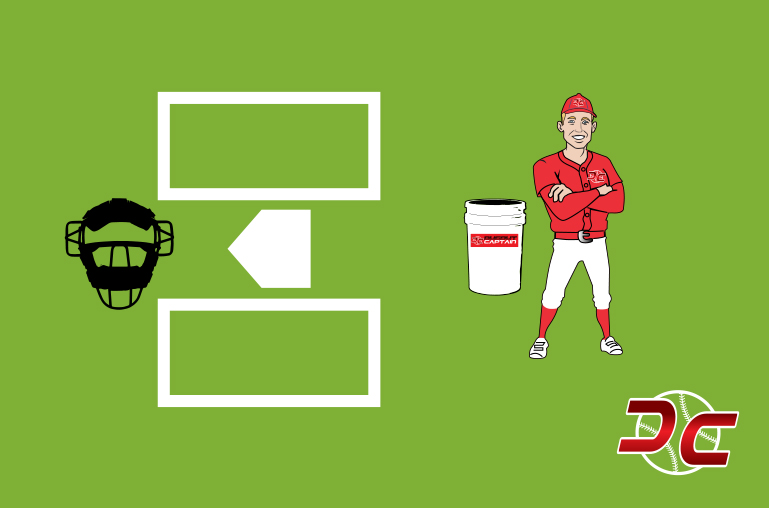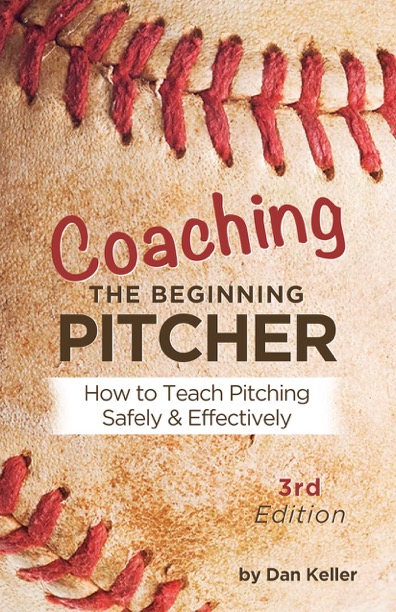How to Coach: Catching #2

Hard
LESSON #2 – STANCES
Dugout Captain’s How to Coach – Catching #2 is led by Brent Mayne. Coach Mayne is a 15-year MLB veteran, former 1st round draft pick, author of the book The Art of Catching, and an advanced scout for the Los Angeles Dodgers. This how-to-coach series is designed to provide an instructional foundation that you can use to work with your own athletes. Coach Mayne packs loads of instruction into the videos, and Dugout Captain has worked hard to break it down to teachable chunks. It is included here in outline format:
PART I – CATCH PLAY
Review Lesson #1 (5 mins) – While playing catch, review the following bullet points:
- Grip & Target – Throw with a four-seam grip and aim for the head.
- Receiving – Catch the ball in the hot-spot and keep the elbow below the glove.
- Transition – Center the baseball to catch in front of the chest, and keep the glove there as the hand reaches back behind the body.
- Footwork – Establish Right / Left / Throw, then work to surround the baseball as a shortstop would do when turning a double play.
PART II – DISCUSSION
Coach Mayne is very adamant that all catchers are unique, and there is no one stance that fits all body types. Be sure that your catcher maintains comfort and athleticism at all times. Take some time to discuss and overview of the three stances:
- Sign Giving – Used when giving a sign to the pitcher. Most important is privacy, no one sees your sign but the pitcher.
- Comfort – Used with no baserunners and less than two strikes
- Blocking / Throwing – Used when action is imminent! Baserunners are on base and/or two strikes on the batter.
Each pitch, a catcher will use the sign-giving stance… and then move into EITHER the Comfort or Blocking/Throwing stance depending on the situation. In either case, the glove should be offered as a target prior to shifting. The order of operation is: sign, target, stance.
PART III – DETAIL
Sign Giving Stance – Paying special attention not to overwhelm the athlete, instruct and practice the three catcher stances in detail. Start with the Sign-Giving Stance:
- Feet – Keep a narrow base, with the toes pointing straight ahead. From there, drop straight down into a crouch position and keep the knees close together.
- Glove – Hang the glove on the side of the leg to block the side view.
- Hand – Directly in front of the cup
Comfort Stance – Remember, this stance is used when there is no danger of advancing baserunners. As the name suggests, therefore, comfort is key to this stance:
- Feet – Shoulder width recommended, although Coach Mayne keeps this very open. Drop into the crouched stance comfortably.
- Upper Body – Tall, “stacked”, posture presenting a nice, square visual.
- Glove – Relaxed, tension free, with the elbow below the glove. The glove forearm rests on the thigh.
- Hand – Safely position behind the body.
Blocking / Throwing Stance – As this stance is used when baserunners MAY advance, it is a higher stance allowing for quick, athletic movements. Coach Mayne emphasizes that there needn’t be a huge difference between the Comfort and Blocking/Throwing Stances. Instead, simply raise the rear end a couple inches and shift the weight to the balls of the feet. Essentially, “get ready to move.”
- Twist the Feet – The feet twist so that the toes point forward. Doing that shifts the weight more to the ball of the feet as
- Raise the Butt – 2-3 inches is enough to put the body into an athletic position ready to “strike.” Check to see that the athlete has in fact moved the bodyweight to the balls of the feet, but don’t add another key.
- Barehand to Glove – Move the hand to a close fist position directly behind the glove.
PART IV – REPETITIONS
Practice use of the catcher stances with live receiving repetitions. For each rep, have the catcher drop into a sign-giving stance, relay the sign to you (as pitcher), and then move into a particular stance. Guide the athlete through the three steps: 1. Sign; 2. Target; and, 3. Stance. Throw baseballs and allow the athlete to grow comfortable with the stances.
- Comfort Stance (5 pitches) – Give a sign, position the glove, and move to the comfort stance. Catch the ball with proper receiving fundamentals.
- Blocking Throwing Stance (5 pitches) – Give a sign, position the glove, and move to the blocking/throwing stance. Catch the ball with proper receiving fundamentals. While actual blocking instruction comes next lesson, feel free to bounce a couple baseballs to see how your athlete moves into the blocking position.
DC KEYS
- Tension Free – The upper body should be relaxed, and specifically the glove arm must remain tension-free to move quickly.
- Target Early – Pitchers want a focused target, and they want it early. Force the habit of giving sign, setting a target, and THEN moving into stance.
- Catching Bullpens – When catching bullpens, 50% of pitches should be received in the comfort stance and 50% in the blocking throwing stance. For future reference, this means that athletes are blocking while in the blocking/throwing stance!
HOMEWORK
Mirror Work – Practice (1) Giving a sign, 2). giving the target; and 3). moving into the stance in front of a mirror. Get comfortable in the comfort stance, and check yourself out.
Catch Bullpens – Now that you are a catcher… catch! Bullpens are the fastest way to learn. Remember the 50/50 rule – equal time spent between comfort and blocking/throwing stances.

EXECUTION KEYS
- CATCH PLAY - REVIEW
- DISCUSSION - STANCES
- DETAIL - STANCES
- REPETITIONS
DC KEYS
- TENSION FREE
- TARGET EARLY
- CATCH BULLPENS
EQUIPMENT LIST
 Baseball Buckets1
Baseball Buckets1 Catcher's Gear1
Catcher's Gear1 BookPurchase
BookPurchase